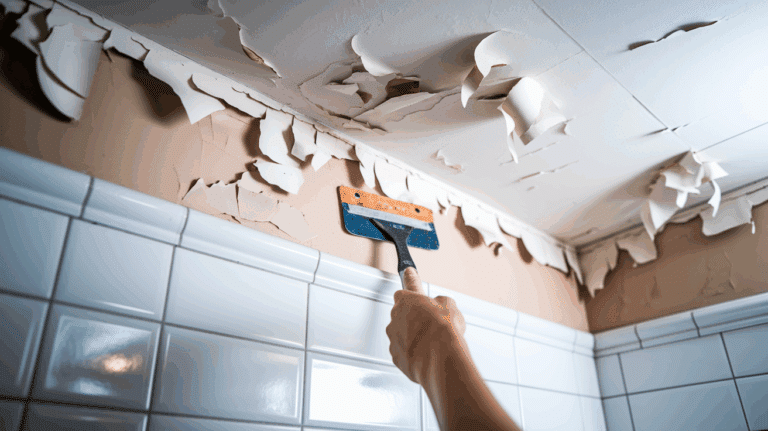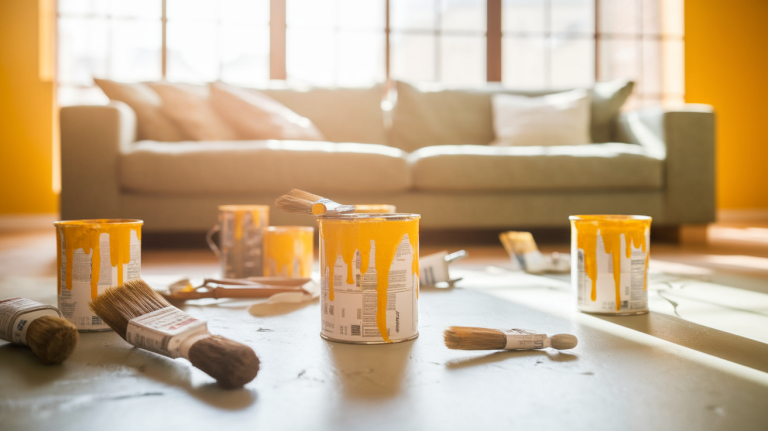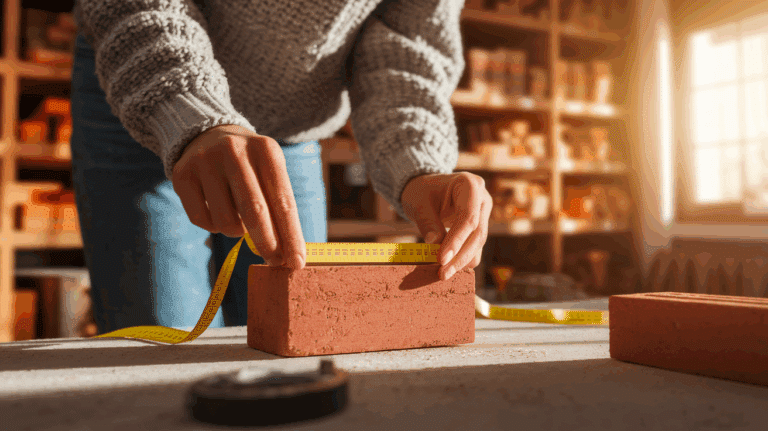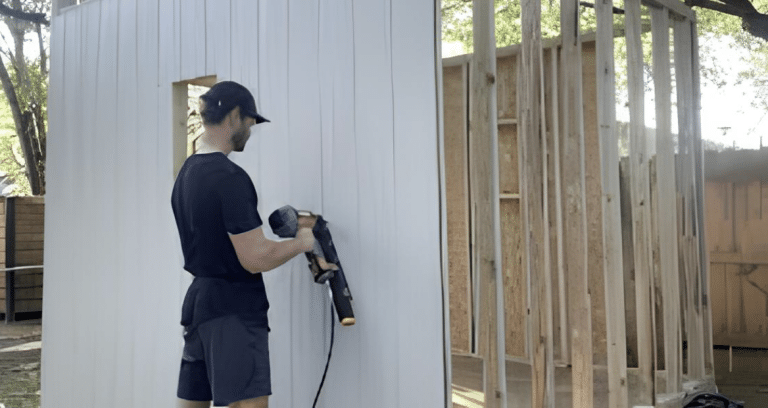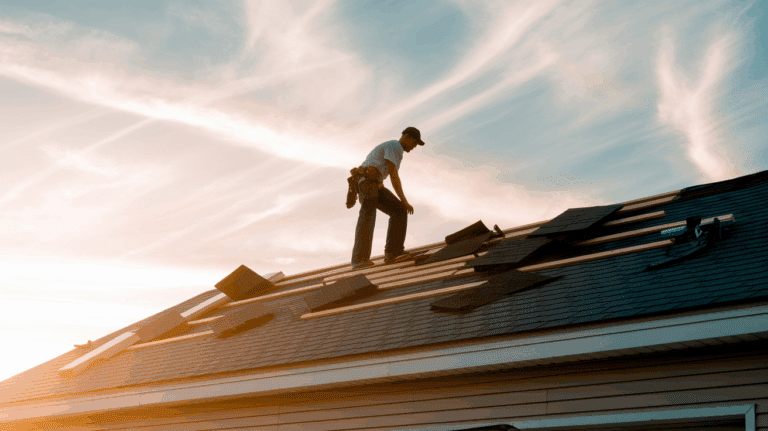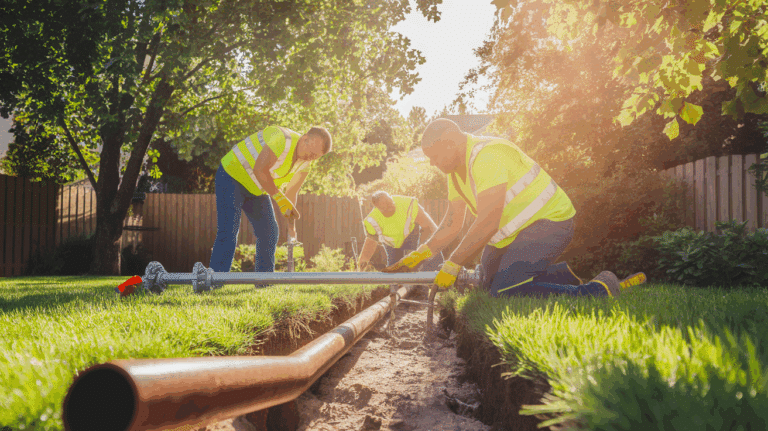A Newbie’s Guide to Brick Siding
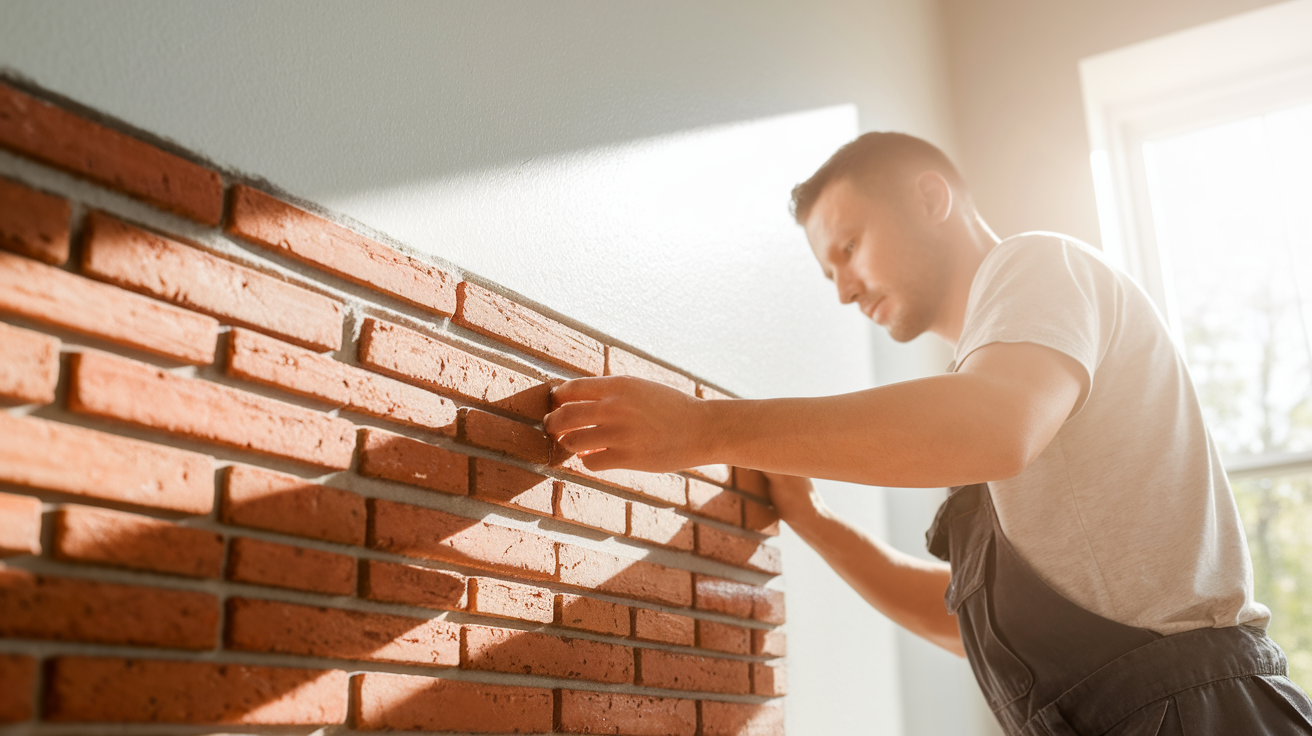
Ever looked at a home with brick siding and wondered if it might be right for your house? I’ve been there, too.
Brick siding is a classic choice that never seems to go out of style, but there’s a lot to learn before making such a big decision.
In this guide, I’ll explain everything you need to know as a first-timer considering brick for your home’s exterior. From what it’s made of to how much it costs, I’ll cover the basics in plain language.
By the end, you’ll have a clear picture of whether brick siding is a good choice for your home, your climate, and your budget.
What is Brick Siding
Brick siding is an exterior covering for your home made from real clay bricks.
Think of brick siding as a protective shell for your home. The bricks are placed one by one on the outside of your house, with small gaps filled with mortar.
Behind this brick layer, there’s usually a small air space, then a water-resistant barrier, and finally, your home’s wood frame.
The bricks don’t hold up your house your wood frame does that job.
Instead, the brick layer works to keep out rain, wind, and temperature extremes while giving your home that classic brick look that many people love.
Types of Brick Siding
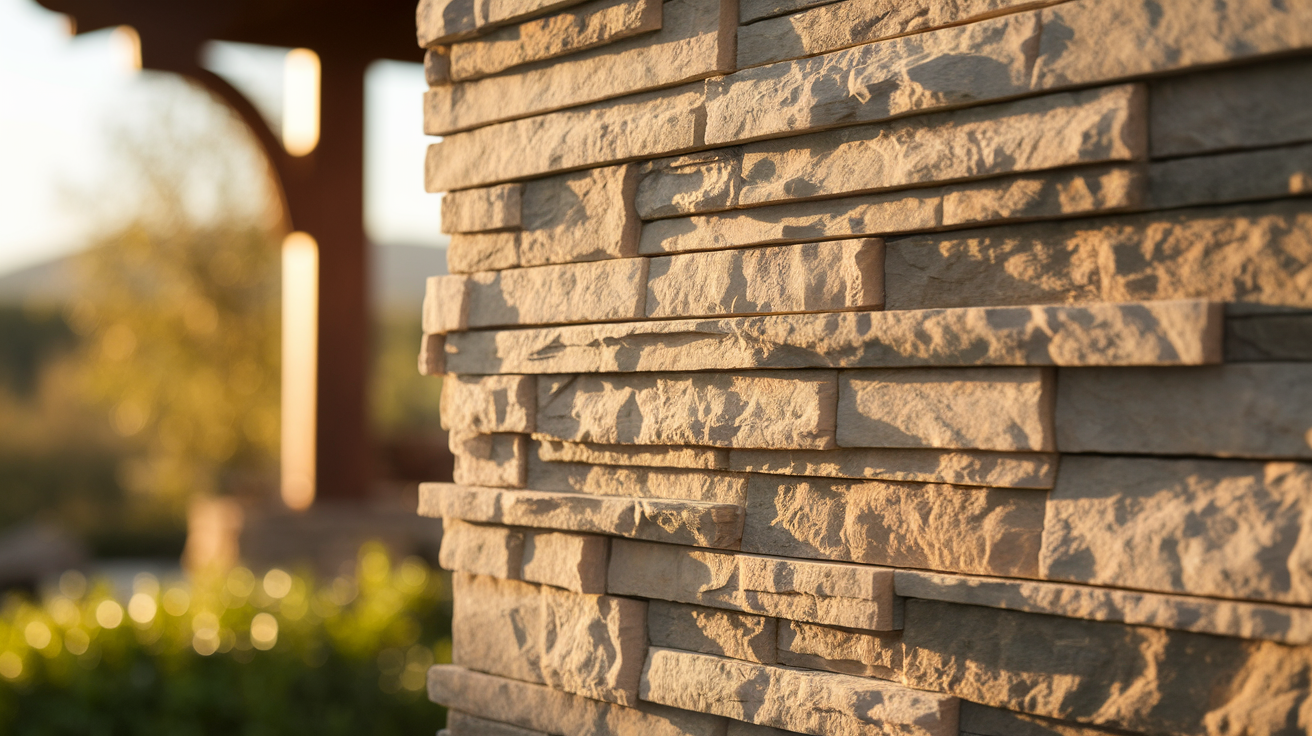
When choosing brick siding for your home, you have several options to consider. Each type offers different looks, benefits, and price points to match your needs:
- Traditional Clay Brick Veneer: The most common type, made from natural clay and attached to your home’s frame with a small air gap in between.
- Thin Brick Veneer: Real brick that’s sliced thin and installed like tile weighs less than traditional brick veneer.
- Brick Panel Systems: Pre-made panels containing multiple bricks already set in mortar, faster to install than individual bricks.
- Reclaimed Brick Siding: Salvaged bricks from old buildings, offering unique colors and textures with environmental benefits.
- Manufactured Stone Veneer: Concrete products made to look like brick, often lighter and less expensive than real brick.
- Fiber Cement Brick Siding: Cement-based products that mimic brick appearance but cost less and weigh less.
- Brick Façade: Thin brick-like coverings that attach directly to the wall without an air gap, providing less insulation.
- Insulated Brick Panels: Newer systems that include insulation built into the panels for better energy efficiency.
How to Install a Brick Siding
Installing brick siding yourself is a big project, but if you have the time and skills, you can save money.
Materials You’ll Need
| Materials and Tools | Description |
|---|---|
| Bricks | The primary building blocks for the siding. |
| Mortar Mix | A binding material is used to hold the bricks together. |
| Metal Ties | Used to secure the brick siding to the structural wall. |
| Moisture Barrier | Prevents water from seeping into the structure. |
| Flashing | Directs water away from critical areas to prevent leaks. |
| Trowels | Tools for applying and smoothing mortar. |
| Level | Ensures that bricks are laid straight and even. |
| Brick Hammer | Used to cut or shape bricks and remove excess mortar. |
| Safety Gear | Includes gloves, goggles, and masks for personal protection. |
| Saw for Cutting Bricks | A specialized saw to trim bricks to fit properly. |
Step-by-Step Process
Step 1: Start by installing a moisture barrier over your existing wall sheathing. This will keep water from entering your home’s structure.
Step 2: Next, install metal flashing at the bottom edge where the brick will start. This will direct water away from your walls.
Step 3: Begin laying bricks at the bottom corner of your wall. Use a level constantly to keep the rows straight. Apply mortar to the bottom and one end of each brick before placing it.
Step 4: Attach metal ties every few rows to connect the brick to the house frame. These keep the brick siding secure.
Step 5: Install special flashing around windows and doors and leave small gaps for expansion joints. Later, these will be filled with caulk.
Step 6: To cut bricks, score them first with a brick chisel and then break them cleanly with a brick hammer. Wear safety glasses during this step.
Step 7: After the mortar has dried for about 24 hours, use a jointing tool to smooth and shape the mortar joints between the bricks.
Basic Cost of Brick Siding
Installing brick siding on your home is a bigger investment than many other siding options, but it can pay off in the long run. Here’s what you need to know about the costs:
- Average Costs: The average cost to install brick siding on a typical home ranges from $22,500 to $70,000, with a national average of around $26,000.
| Brick Type | Cost Range (per square foot) | Total Installation Cost |
|---|---|---|
| Traditional Brick | $2 – $7 | Average cost for a typical home: $22,500 – $70,000 |
| Face Brick Veneer | $3 – $5 | Average cost for a typical home: $22,500 – $70,000 |
| Interlocking Brick | $6 – $25 | Average cost for a typical home: $22,500 – $70,000 |
| Thin Brick Veneer Strips | $10 – $14 | Average cost for a typical home: $22,500 – $70,000 |
| Handcrafted Brick | $14 – $25 | Average cost for a typical home: $22,500 – $70,000 |
Note: While the upfront cost for higher-quality brick options may be higher, they often provide longer-lasting durability and aesthetic appeal.
Certain Advantages of Brick Siding
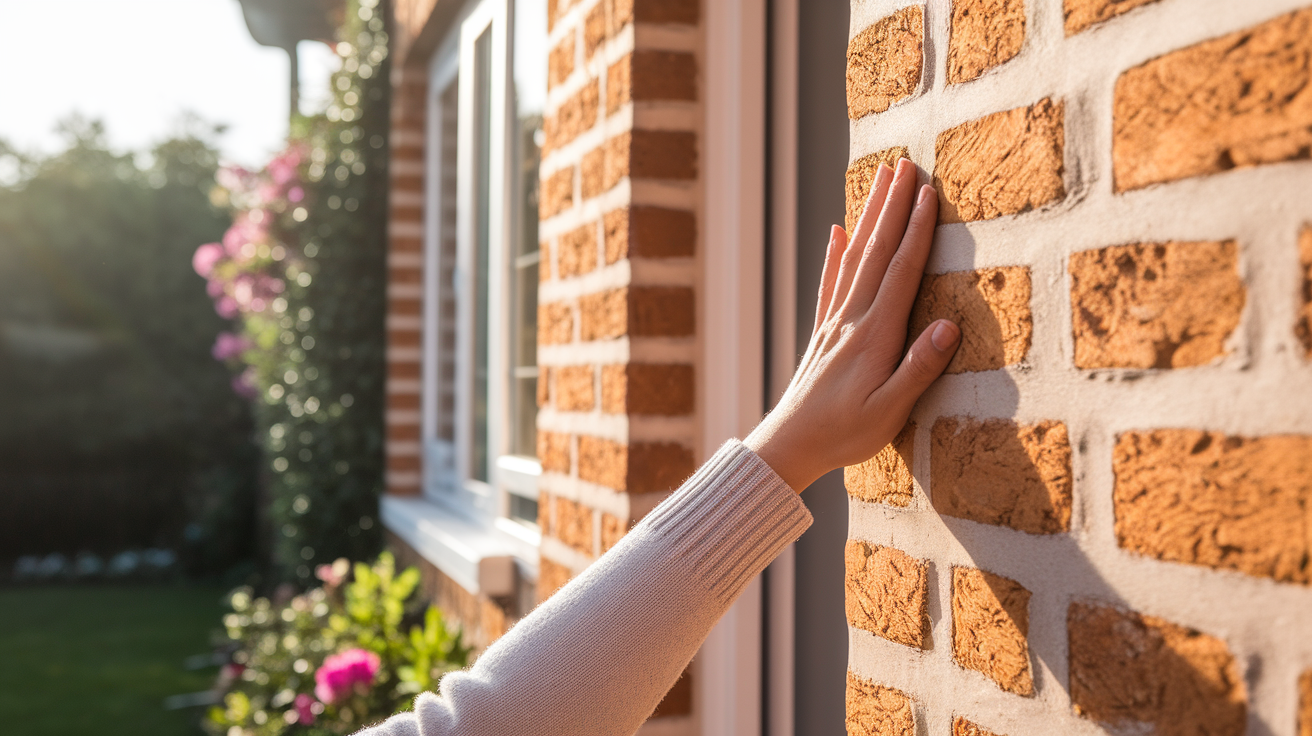
- Durability: Brick siding can last for decades, withstanding all types of weather conditions. It doesn’t warp, dent, or rot, making it a long-term choice for your home’s exterior.
- Low Maintenance: Unlike other materials, brick siding requires very little upkeep. It doesn’t need to be painted or sealed regularly, saving time and money over the years.
- Energy Efficiency: Brick’s natural thermal properties help maintain a stable indoor temperature, which can lead to lower heating and cooling costs.
- Fire Resistance: Bricks are naturally fire-resistant, offering an added layer of safety for your home and peace of mind for your family.
- Timeless Appearance: Brick siding’s classic look never goes out of style. It gives your home a charming appearance that blends well with many styles.
- Increased Home Value: Brick siding can boost your home’s resale value. Its durability, low maintenance, and classic appeal make it attractive to potential buyers.
Conclusion
So there you have it: your crash course in brick siding.
Yes, it costs more upfront than some options, but those decades of worry-free protection can be worth every penny.
It doesn’t matter if you choose traditional brick veneer or one of the newer, lighter options; you’re making a solid choice that will likely outlast your mortgage.
Before you decide, talk to a few contractors in your area for quotes and maybe drive around looking at brick homes you like.
And remember, good brick siding isn’t just about looks; it’s about giving your home a shield that will last.

